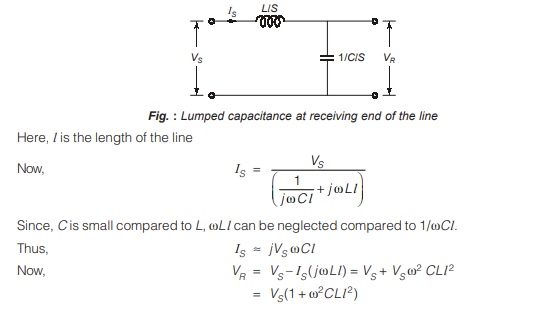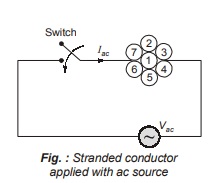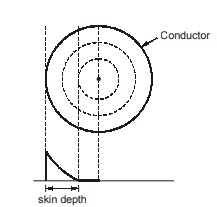Ferranti Effect
What is the Ferranti effect?
In a medium or long transmission line when open circuited or lightly loaded the receiving end voltage is found more than the sending end voltage. This phenomenon of rise in voltage at the receiving end of the open circuited or lightly loaded line is called the “Ferranti effect”.
- This effect is due to voltage drop across the line inductance, due to charging current, being in phase with the applied voltage at the sending end of the line. Thus, both capacitance and inductance are necessary to cause this phenomenon.
- Ferranti effect is experienced only in medium and long transmission line operating under no load condition or light load condition. It does not occur in a short transmission line because the capacitance is smaller negligible and therefore, charging current is negligible in a short line.
- The Ferranti effect is much more pronounced in underground cables, even in short lengths, because of their high capacitance per unit length and lower electrical impedance.
- A simple explanation of the Ferranti effect on an approximate basis can be advanced by lumping the inductance and capacitance parameters of the line as shown below in figure


Skin Effect and Proximity Effect
Skin Effect
- In AC system, there is non-uniform distribution of current in a conductor i.e. most of the current is distributed
 on the outer surface because of non-uniform distribution of flux-linkages. This effect is called “skin effect”.
on the outer surface because of non-uniform distribution of flux-linkages. This effect is called “skin effect”. - The distribution of current throughout the cross-section of conductor is uniform only when DC is passing through it. On the other hand, when AC is flowing through a conductor, the current density is higher at the surface of the conductor compared to the current density at its center. It causes larger power loss for a given rms AC than the loss when the same value of DC is flowing through the conductor. Consequently, the effective conductor resistance is more for AC than for DC.
Let us consider the figure shown which consists of a stranded conductor (outer strand number = 6 and inner strand number = 1). - When alternating voltage is applied, alternating current is produced which creates alternating flux. The flux linking the outer strand decreases as we move towards the outer strands because the flux created by inner strand does not link it. The inductive reactance of the inner strands increases while that due to outer strand decreases so that the outer strands conducts more AC than the inner strand. With the increase of frequency, the non-uniformity of inductive reactance of the strands becomes more pronounced, so also the non-uniformity of current distribution.
Skin Depth

The depth of conductor upto which the current concentration is non-zero from surface is called skin depth.
The skin depth is inversely proportional to the square root of frequency
Proximity Effect
Apart from skin effect, non-uniformity of current distribution is also caused by “proximity effect”.
In a conductor carrying alternating current, if currents are flowing through one or more other nearby conductors, such as within a closely wound coil of wire, the distribution of current within the first conductor will be constrained to smaller regions. The resulting current crowding is termed the proximity effect. This crowding gives an increase in the effective resistance of the circuit, which increases with frequency.
Note:
- Skin effect causes larger power loss for a given rms AC than the loss when the same value of DC is flowing through the conductor which is an undesirable effect.
- Due to skin effect, the effective conductor resistance becomes more for AC than for DC.
- “Proximity effect” and “Skin effect” both results in the increase in the resistance of conductor and decrease of self reactance.
- Both the effects depend on the conductor size, frequency of the supply, resistivity and relative permeability of the material.
- Proximity effect is more pronounced for large conductors, high frequencies and close proximity.
- Proximity effect is more pronounced in case of cables where the spacing between the conductors is small
<< Previous | Next >>
Must Read: What is Power Systems?

